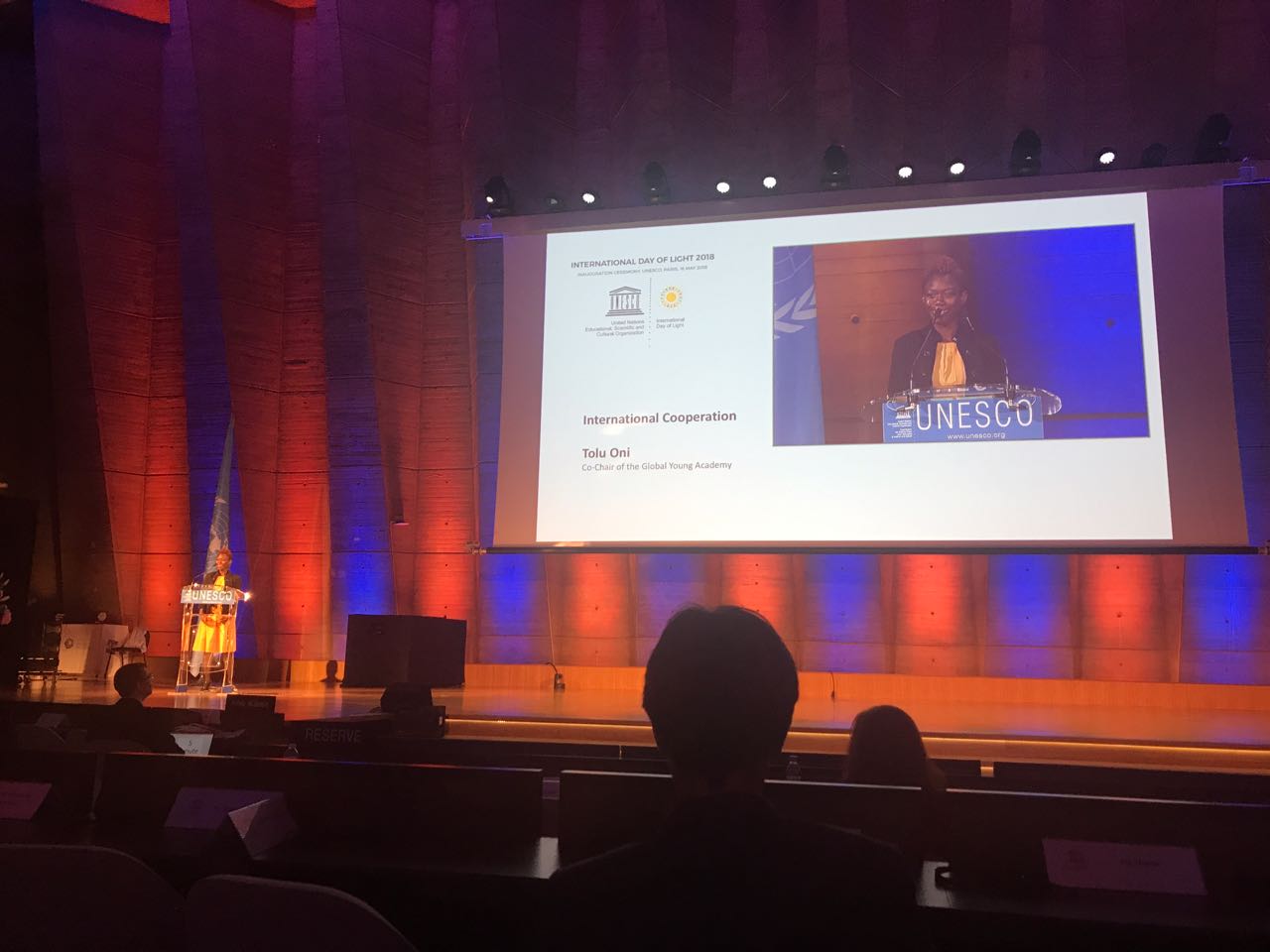On Wednesday, 16 May 2018 at UNESCO headquarters in Paris, the United Nations Educational, Scientific and Cultural organization held an international Symposium on the occasion of the international Day of Light, a global initiative that provides a platform for the continued appreciation of light and the role it plays in science, culture and art, education and sustainable development, and in fields as diverse as medicine, communications and energy. The broad theme of light allows many different sectors of society worldwide to participate in activities that demonstrate how science, technology, art and culture can help achieve the goals of UNESCO – education, equality and peace.
Recently re-elected GYA Co-Chair Tolu Oni was one of the speakers. She picked up the need for, and purpose of international cooperation in science and devoted her contribution to naming the hurdles of a true collaborative partnerships in science and how GYA works to help overcome these obstacles. “If we are committed, as a society, to exploring the ways in which science can benefit society, we must”, she said, “be committed to addressing the challenges that hamper international cooperation. We otherwise inadvertently limit the impact of scientific findings globally”.
Access to research tools and opportunities for collaboration need to be provided, also spaces that facilitate intercultural and interdisciplinary dialogue. “At the GYA, we do this through building community. I have just come from the 8th GYA Annual General Meeting in Thailand. At these gatherings, members have the opportunity to develop ideas, plan collaborations, or simply chat with a diverse range of scientists across the world. And it is the relationships built through this community that foster international cooperation in ways that are often immeasurable but nonetheless undeniable. We believe that platforms that facilitate this kind of community building are critical for international partnerships.”

